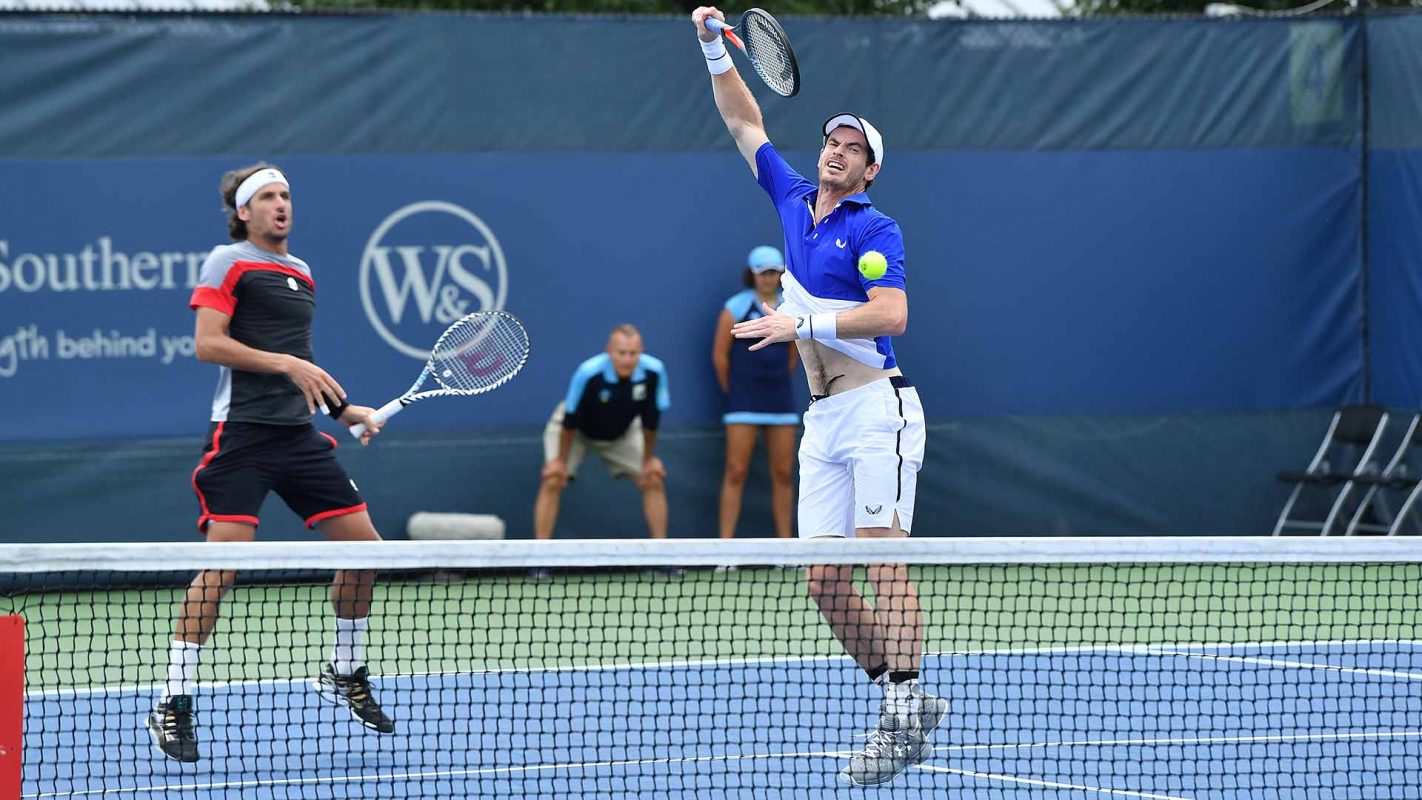In one of his press conferences at the Western and Southern Open in Cincinnati, Andy Murray said he would not be playing the US Open. His announcement came a day or so after his initial declaration that he would be playing only the two doubles events in the final Major of the season. A few things came out of Murray’s remarks. The first and the obvious was that the former world no. 1 was ready to give it his all (yet again) to play singles. The second, the understated aspect, was that doubles while seeming easy vis-à-vis singles required just as much focus, if not more. Then, there was a third.
In tennis’ continuity though, the relevance of the doubles game is not a recent epiphany. However, the last few tournaments of the 2019 season that featured some eclectic partnerships – Stefanos Tsitispas and Nick Kyrgios, Andy Murray and Feliciano Lopez, the Pliskova twins, Andy and Jamie Murray, and so on – has made doubles slightly more prominent than singles.
Singles has become monotonous with the same set of players making it to the final rounds. On the other hand, doubles has brought in more verve to the existing status quo of the Tour, with each player’s individuality adding to the dynamics of the team. After his first outing as Kyrgios’ doubles partner at the Citi Open in Washington in July, Tsitsipas pointed this out.
“It’s the joy of being with a person who thinks differently and reacts differently. I would characterise him (Kyrgios) as someone who likes to amuse. I’m very serious and concentrated when I play, but he just has the style of speaking all the time. It’s good sometimes to have a change,” the Greek had said.
These changes – as seen with Murray’s recent decision – may not extend for a longer period. The culmination of these short-term team-ups does – and should – not mean the end of the road of doubles piquing attention, per se. At the same time, these transitory partnerships also reroute the discussion back to the financial side of the doubles game.
In a recent interview with Forbes, Jamie Murray – a doubles specialist – shared how conducive it had become for players to take up doubles as the sole means of a tennis career these days, as compared to in the past.
“Because the money is always increasing in tennis, it is a much more viable option to go down the doubles route a lot earlier than previous generations. Before, people would play singles and then when their ranking dropped, they played an extra few years of doubles. Now it is a genuine option to start off much younger and have a career in doubles,” the 33-year-old said.
Despite Murray’s upbeat attitude, these increases have not exactly trickled towards doubles, especially at the Slams including the upcoming edition of the US Open. For 2019, the USTA showed-off yet another hike in the prize-money coffer. The men’s and women’s singles champions will be awarded $3.8 million. In comparison, the men’s and women’s doubles teams winning the respective title will get $740,000. This sum gets further diluted for the mixed-doubles’ titlists who will get $160,000 as a team.
This is the third and final takeaway that emerged from Murray’s US Open call. For several of these singles players, intermittent doubles play is an option. For those who play only doubles, that is the only option they have. The doubles game requires similar effort – travel, expenses and fitness – the costs continue to outweigh the benefits. These momentary team formations are a gauge revealing the disparity of tennis’ two sides, visible yet obliviated beyond tokenism.






